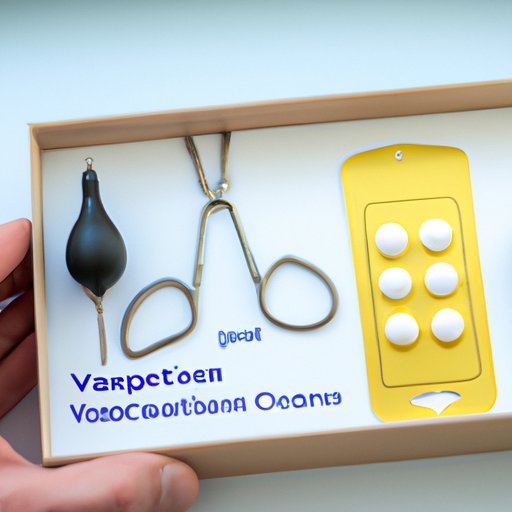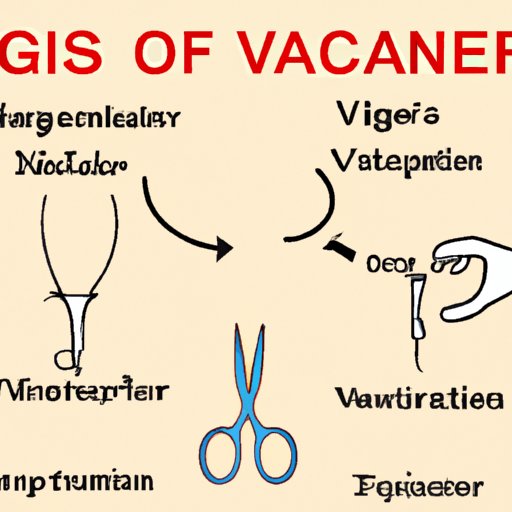Exploring the Basics of Vasectomy: What is it and How Does it Work?
A vasectomy is a surgical procedure for men that permanently prevents pregnancy by blocking sperm from entering the ejaculate. It involves cutting or blocking the vas deferens, which are two tubes that transport sperm from the testes. Although a vasectomy does not affect a man’s ability to experience sexual pleasure, it does prevent the release of sperm during ejaculation.
A Guide to Understanding the Pros and Cons of a Vasectomy
Vasectomy is considered an effective and relatively safe form of birth control. According to the World Health Organization, vasectomies have a failure rate of less than one percent, making them one of the most reliable forms of contraception available. Furthermore, vasectomies can be reversed, although success is not guaranteed.
The potential benefits of a vasectomy include:
- No need for daily or regular use of contraceptives
- No hormonal side effects
- A safer and more cost-effective alternative to tubal ligation in women
- It is quick, relatively painless, and can be done in an outpatient setting
While there are many advantages to getting a vasectomy, there are also some potential risks and complications to consider. Complications may include infection, bleeding, and swelling at the site of the procedure. In rare cases, a man may experience chronic pain, known as post-vasectomy pain syndrome.
The Process of Getting a Vasectomy: Step-by-Step Overview
If you are considering a vasectomy, it is important to understand the process involved. The procedure typically takes around 30 minutes and can be done in an outpatient setting. Here is a step-by-step overview of the process:
Pre-procedure Consultation
Before the procedure, you will meet with your doctor to discuss the risks and benefits of a vasectomy. You should also inform your doctor of any existing medical conditions or medications you are taking. Your doctor will also provide you with pre-operative instructions, such as fasting before the procedure.
Procedure Preparation
On the day of the procedure, you will be given a local anesthetic to numb the area. To reduce the risk of infection, you may also be given antibiotics.
The Procedure Itself
During the procedure, your doctor will make a small incision in your scrotum and locate the vas deferens. He or she will then cut or block the tubes, preventing sperm from entering the ejaculate. Your doctor may also perform an additional procedure to ensure that the vasectomy is successful.
Post-procedure Care
Following the procedure, you will need to wear a scrotal support for several days to reduce discomfort and swelling. You will also need to abstain from sexual activity for at least seven days. Your doctor will provide you with instructions for follow-up care, such as checking for signs of infection and scheduling semen analysis tests.

Exploring Alternatives to Vasectomy: Other Contraceptive Options
If you are considering a vasectomy but would like to explore other options first, there are several contraceptive methods available. These include barrier methods such as condoms and diaphragms, hormonal birth control methods such as the pill or patch, and natural family planning methods such as tracking ovulation.
Barrier methods work by physically blocking sperm from entering the uterus, while hormonal methods work by preventing ovulation or thickening cervical mucus to prevent sperm from reaching the egg. Natural family planning methods involve tracking a woman’s menstrual cycle and abstaining from sexual activity when she is fertile.

Examining the Impact of a Vasectomy on Sexual Health
Although a vasectomy does not affect a man’s ability to experience sexual pleasure, it may have an impact on his sexual health. A study published in the International Journal of Urology found that men who had undergone a vasectomy were more likely to report a decrease in sexual desire compared to those who had not.
Other studies have suggested that a vasectomy may increase a man’s risk of developing erectile dysfunction. However, a systematic review published in the journal Andrologia concluded that there is insufficient evidence to support this claim.

Discussing the Reversibility of a Vasectomy
A vasectomy can be reversed if desired, although the success rate of the procedure varies. According to the National Institutes of Health, the success rate of a vasectomy reversal depends on several factors, including the length of time since the original procedure and the age of the patient. Generally speaking, the younger the patient and the shorter the time since the vasectomy, the better the chances of success.
Reversal procedures are generally expensive and may not be covered by insurance. Additionally, some men may experience side effects such as pain or fluid buildup after the procedure. Therefore, it is important to weigh the pros and cons of a vasectomy carefully before deciding to proceed.
Overall, a vasectomy is a safe and effective way to prevent pregnancy. While there are some potential risks and complications, these are rare. If you are considering a vasectomy, it is important to speak to your doctor about the procedure and all available contraception options.
(Note: Is this article not meeting your expectations? Do you have knowledge or insights to share? Unlock new opportunities and expand your reach by joining our authors team. Click Registration to join us and share your expertise with our readers.)
